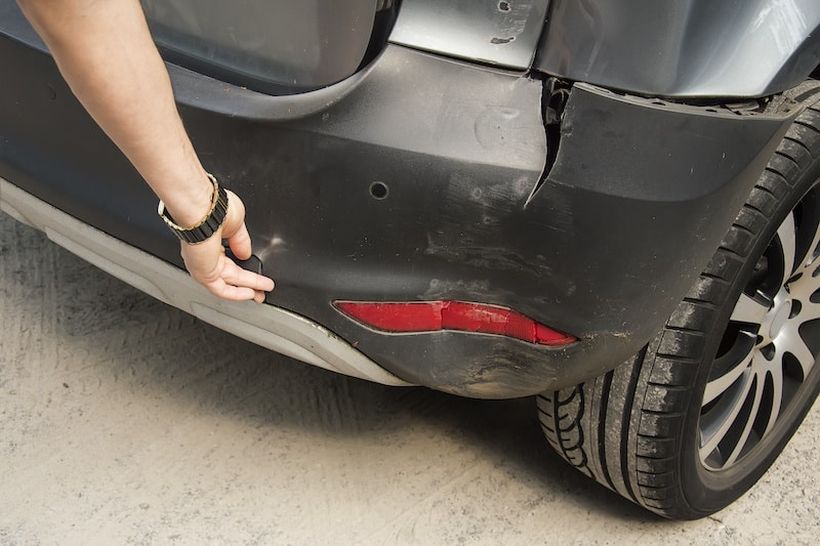It can be very unpleasant to experience car damage from hitting curb. However, all hope isn’t lost. It doesn’t mean that the situation can’t be rectified.
We’ve provided some tips on how to go about handling minor and major damage in this guide. There’ll be a list of possible damage that can be caused by hitting a curb, of course.
Let your mind be at ease because you’re in the best place with information that can make your situation less annoying and confusing from the beginning.
1. Is It Serious?
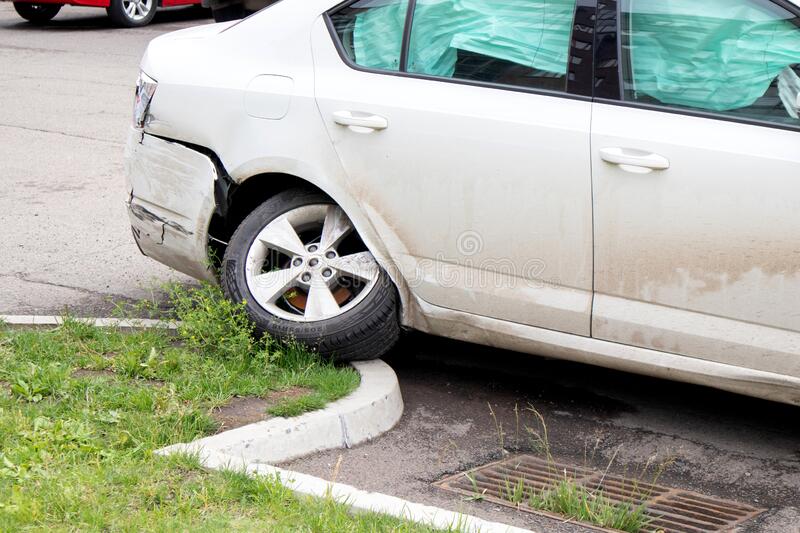
Just keep calm when your car hits a curb. But, of course, this question would undoubtedly be the first thing on your mind: How bad is it? Understand that the seriousness of the situation would depend on the curb’s height, the car’s design, and the driving speed.
For example, if you were moving at a speed of 55 miles per hour (mph) and you hit a curb that’s 5.8 inches high, there’s a likelihood that your car’s front end would sustain severe damage.
However, if you’re going at a speed of 6 mph and the vehicle collides with a 2.9-inch curb, rest assured that you may not have any issue to worry about. Even if there is, it would be insignificant.
2. Possible Car Damage from Hitting Curb
Here, you’ll find five possible problems that can arise as a result of your car hitting a curb.
These are five common damages your car can have after hitting curb
3. Tire Misalignment
Damage to your tire(s) may not be easy to notice due to the toughness of the rubber material. You may even treat the issue with levity because of your confidence in the normal appearance of the tire.
Nonetheless, the collision can damage the structure of the tire and weaken it. You may not notice anything off until after many weeks of regular use.
4. Tie Rod Damage
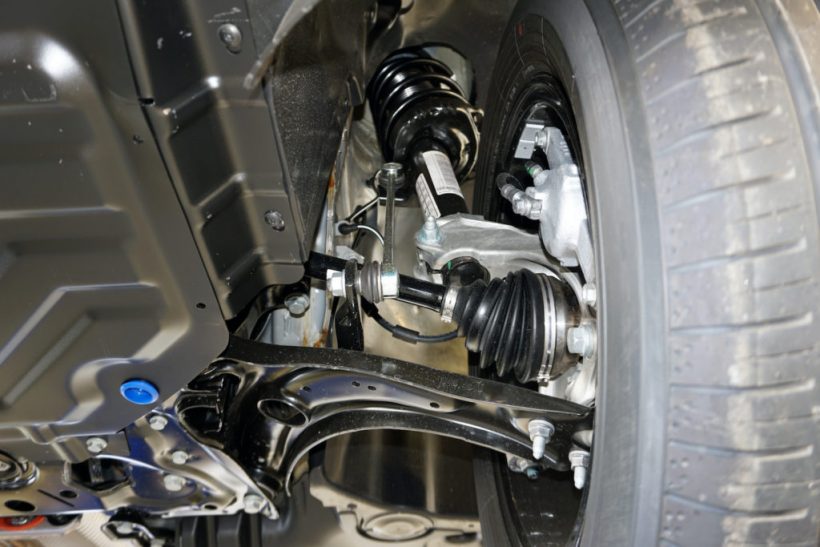
A car’s steering system is linked to its wheels and driveshaft with the aid of the tie rods. With this in mind, you can be sure that tie rod damage can hurt driving smoothness because the steering functionality will be defective. Worse still, it can lead to accidents.
It will be a safety risk to continue driving with such a fault, for example, driving in the winter when the roads may be icy.
5. Damaged Control Arm
Your car’s control arm provides support for the axles and spindles while enabling the up-and-down movement of the suspension. There’ll be too much steering wheel vibration if this part of the vehicle sustains damage. This will also mean that you’ll have a bumpier ride than normal on rough surfaces. Ultimately, the vehicle’s suspension will get ruined.
6. Damaged Wheel Bearing
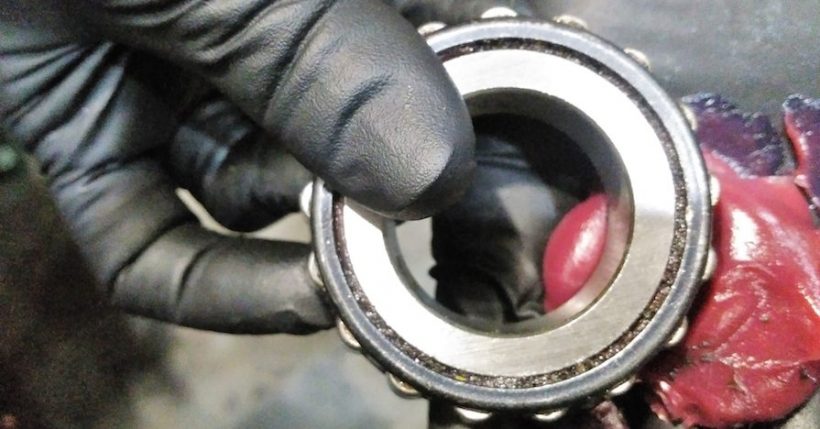
The impact from a sudden curb collision with a curb can damage your car’s wheel bearing. A sign of a faulty bearing is when you feel a shaky movement as you turn the wheel.
7. Damaged Transmission
Your car’s transmission case can be ruined as a result of the impact from hitting a curb. Depending on the force of the impact, your car’s wheel shaft and axle can be pushed into the transmission. What you think is an insignificant bump on the transmission case may lead to something terrible. More possible transmission issues? See them below.
- A damaged oil pan or broken off oil drain valve.
- Ruined transmission fluid and cooling lines.
- Cables and linkages can be disconnected from your car’s transmission case if it runs over a curb and scrapes the vehicle’s bottom.
- What to Do with Car Damage from Hitting Curb
1. Check Your Car
– Check the Tire that Made Contact
The tire may be torn, burst, dented, and so on. Examine its sidewall thoroughly and look out for any bulging internal belts. You need to be meticulous because internal damage that’s left unchecked can be dangerous—for instance, the blowing out of the tire while driving on the freeway.
Apart from the tire, the rims and wheels should be checked to ensure that they aren’t bent or broken. If you notice a tire problem, you may have to move further to inspect the control arms and tie rods.
– Checking the Wheel Alignment
The vehicle’s suspension can be shifted out of alignment leading to tire damage. Look out for the wobbling of the steering wheel and the abnormal directional movements of your car when in motion—for example, veering to the left or right.
Be sure that the steering and wheels of your car are perfectly aligned by driving forward at a slow pace in a wide area (e.g., a parking lot). There’ll be a need for realignment if the steering wheel isn’t positioned correctly when driving or if you notice other related issues.
– Check Your Suspension
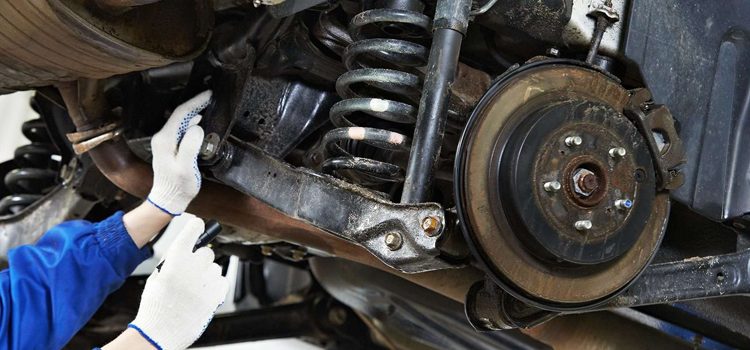
Damage to the front suspension can include the steering knuckle/spindle (the location of the wheel hub) and control arms. A fault in those parts can make it hard to control your car while in motion. A defective suspension would show symptoms of abnormal bouncing and slamming on the ground. Address the problem quickly because it will keep deteriorating.
– Paying Attention to Changes in Steering
Turning around bends will be tricky when the tie rods are broken. There’ll be a need for tie rod replacements in this case. Of course, it’s a job for a professional mechanic.
What about the suspension sway bars (stabilizer/anti-roll bars)? You should assess them for breakage too. Well-functioning sway bars ensure that your car doesn’t sway or roll over when turning. You can drive the vehicle even if these components are defective. However, it’s advisable not to.
Normally, the symptoms of a fault include difficulty in handling, knocking sounds, steering wheel displacement, and lack of control when turning.
– Check Your Transmission
Likely problems that are related to the transmission may show symptoms such as abnormal shifting when driving. Owners of front-wheel drive (FWD) vehicles should take note of this.
Expert auto mechanics can easily detect this problem by performing a check using a transmission diagnostic tool. You can click here to check what transmission scanner is good for your vehicle in case you want to do it yourself. However, it’s advisable to leave the examination of this area to the pros.
2. What to Do Next
3. Practice DIY Fixes for Minor Damage
You should check these parts initially: steering, tires, wheels, rims, alignment, and suspension. Be observant to detect strange sounds and movements easily. A DIY fix can be performed if you notice that the problem isn’t a serious one, such as a torn or burst tire.
For example, damaged tires can easily be swapped with a good spare tire (based on availability). Although, in the case of a ruined tire, it would be wise to inspect the wheels and rims thoroughly to ensure that they haven’t sustained damage.
Contact a mechanic immediately if you doubt the true condition of some parts. Components like the strut or strut mount are hard to repair, so you’d have to let a mechanic work on them.
Take Your Car to an Expert
Get your car inspected at an auto workshop by a reputable mechanic. This is, of course, the best step to take, even for minor damage. You just never know when it comes to severe damage that’s hidden, especially in parts like your tires.
Tips to Avoid Hitting Curbs
It can be very hard to keep your car away from curbs while driving or parking in some cases. For example, weather conditions that are characterized by poor visibility such as heavy snowfall, rainfall, etc. This section has 4 tips that you should follow to greatly reduce your chances of hitting curbs.
Follow these four tips to avoid hitting curbs while driving and costly repair service after that
Avoid High-Speed Driving
You should understand that high-speed driving isn’t safe because it’s hard to dodge curbs in such situations. You may have to worry about yourself instead of the car if a serious accident happens. Colliding with curbs while driving fast can make the damage far worse than what it could have been if you were driving slower.
Prevent Possible Distractions
Eliminate things that can make you less focused while driving. You can put your phone on silent as you enter the car or resist the urge to operate the stereo while driving.
Try to Dodge Sharp Objects while Driving
There’s a possibility that you could lose perfect control of your car when one of its tires hits a sharp object on the road while in motion. It can be worse when the tire bursts. The vehicle can veer off the road to hit a curb when such a thing happens. The curb surface struck may have a jagged surface.
Learn how to Park like a Pro
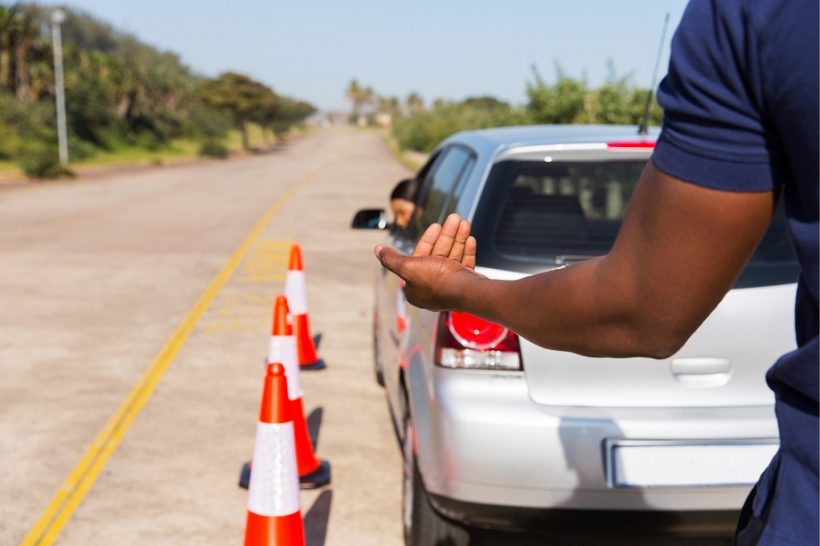
This can significantly decrease your chances of curb collision. Learn how to park well in various scenarios—even parallel parking.
Conclusion
Don’t delay in going for an auto repair workshop check after car damage from hitting curb. You should only consider it safe to drive after a mechanic must have examined the vehicle to uncover all the problems that may have developed.
It’s advisable to include collision insurance as part of your auto insurance coverage so that the cost of repairs will be taken care of whenever such an incident occurs.

